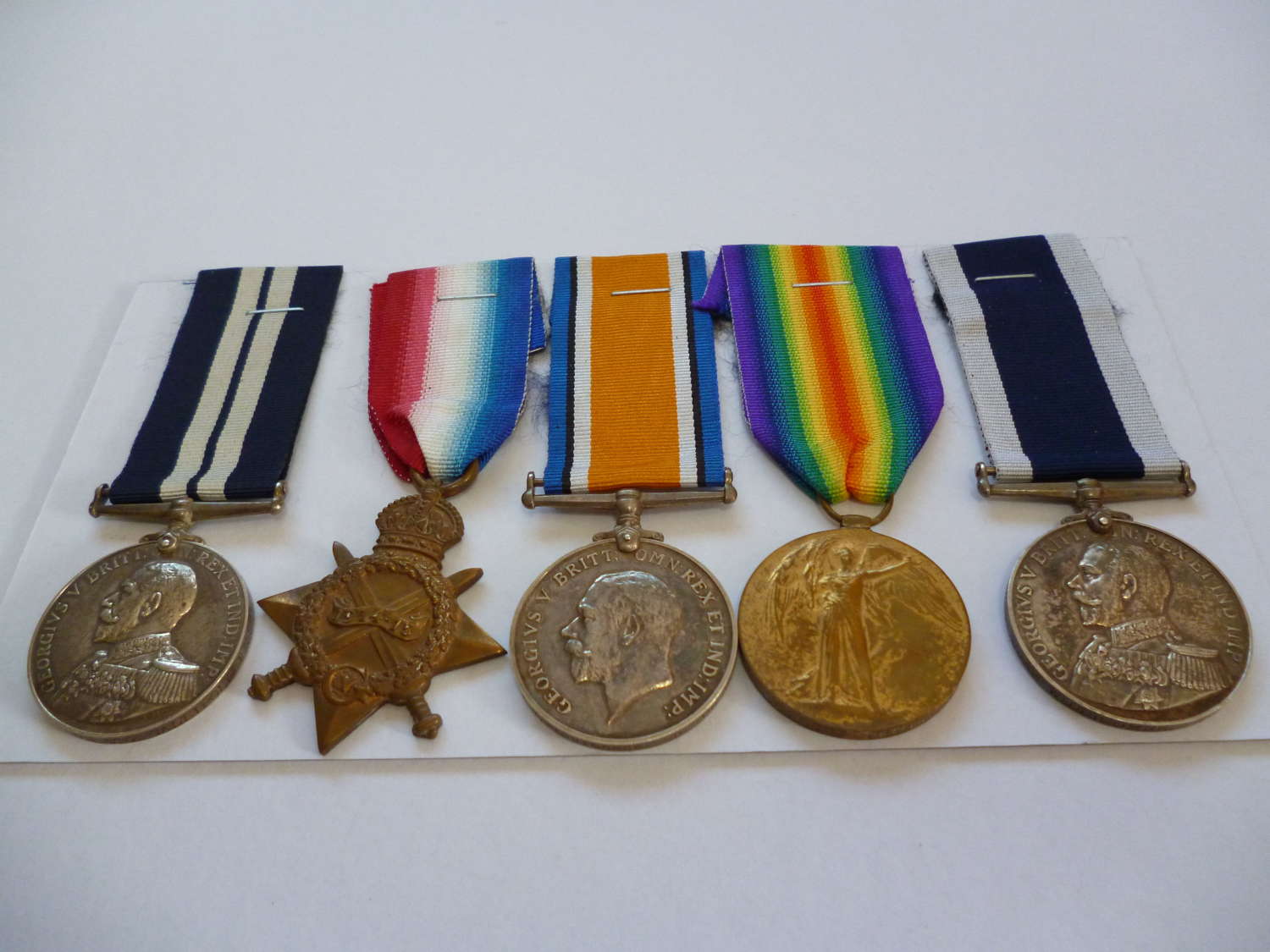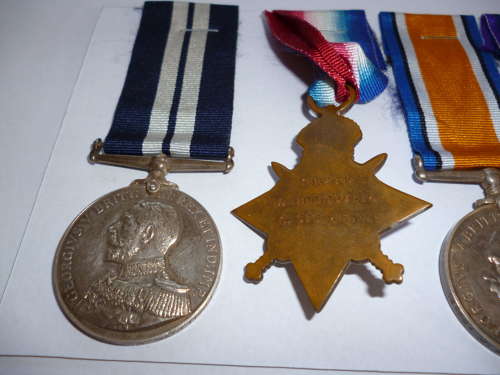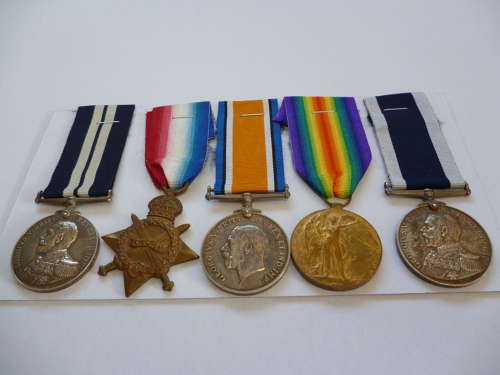

A Great War ‘Evacuation of Gallipoli’ D.S.M Group
Code: 51521
A Great War ‘Evacuation of Gallipoli’ D.S.M. group of five awarded to Chief Stoker J. Widdicombe, Royal Navy
Distinguished Service Medal, G.V.R. (146294 J. Widdicombe, Ch. Sto., Gallipoli Opns. 1915-6); 1914-15 Star (146294 J. Widdicombe, C. Sto., R.N.); British War and Victory Medals (146294 J. Widdicombe. Ch. Sto. R.N.); Royal Navy L.S. & G.C., G.V.R., 1st issue (146294 John Widdicombe. Ch. Sto. H.M.S. St. George)
Condition good very fine and better
FOOTNOTE
D.S.M. London Gazette 15 May 1916:
‘In recognition of the services of Petty Officers and men of the Eastern Mediterranean Squadron during the evacuation of the Gallipoli Peninsula in December 1915 to January 1916.’
John Widdicombe was born in Dartmouth, Devon in February 1870 and entered the Royal Navy as a Stoker 2nd Class in August 1888. Having then gained advancement to Chief Stoker in March 1904, he was pensioned ashore in July 1910, when he enrolled in the Royal Fleet Reserve.
Recalled on the outbreak of hostilities, Widdicombe joined the cruiser H.M.S. Europa in June 1915, shortly before she was employed in the Eastern Mediterranean as a flagship at Mudros (and later as a depot ship for destroyers, and other smaller vessels, in the Aegean). Yet soon after his arrival in that theatre of war, he joined the strength of Europa II, the “Stavros beach party”, and it was for services in this capacity at the end of 1915, and in St. George in early 1916, that he was awarded the D.S.M., the latter having taken over as a depot ship for Europa, and accordingly the responsibility for the Stavros party. Widdicombe remained similarly employed until August 1917, was invalided with cerebral thrombosis that November and died in February 1920, while on the books of Vivid. He was buried in Weston Mill Cemetery, Plymouth.
Sold with the original Admiralty forwarding letter for his Great War campaign medals, dated 13 January 1922, and addressed to his widow; and copied research.
